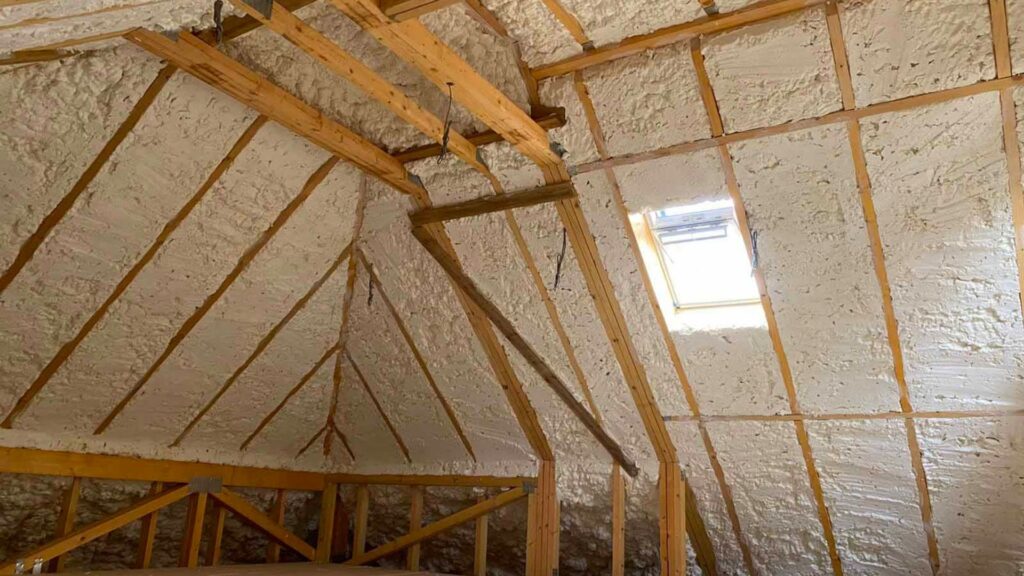
Spray foam Removal has gained popularity in recent years, but it has also sparked a wave of fraudulent activities. While using spray foam insulation is legal, many banks and building societies often require its removal before approving mortgages or selling a property. Unfortunately, some unscrupulous companies prey on homeowners looking to remove spray foam insulation, leading to costly scams. Here are some warning signs to be aware of, as well as tips to protect yourself.
1. Did They Contact You First?
Be cautious of unsolicited calls. Scammers often target unsuspecting homeowners through cold calls, claiming that their insulation requires urgent removal. If someone contacts you out of the blue, it’s a major red flag. Reputable companies typically do not cold-call potential clients. Instead, they rely on referrals, reviews and legitimate marketing channels. Never agree to an appointment or allow access to your property without thoroughly vetting the company.
2. How Did They Get Your Number?
If the original installer of your spray foam insulation is no longer in business, there’s a chance that fraudsters have somehow obtained your contact information. This could be an attempt to deceive you into believing they are affiliated with the original installer. Always ask how they got your details and do not proceed if their explanation seems vague or unconvincing. It’s best to reach out to the original company, if possible, or research legitimate spray foam removal specialists independently.
3. Is Roof Removal Necessary?
Many scam artists may claim that removing your spray foam insulation requires a complete roof removal. However, this is rarely the case. In fact, around 80% of insulation removals do not involve removing the roof. Understanding the type of foam you have installed can help you make informed decisions:
- Open Cell Foam: This type is generally white and has a softer texture. It is typically easier to remove without major structural alterations. Open cell foam does not usually necessitate roof removal.
- Closed Cell Foam: This foam is yellow and much harder, posing more of a challenge for removal. While some cases may require roof alterations, it is typically only necessary as a last resort. Removal methods vary but often include:
- Ice Blasting: A common and effective method for closed cell foam removal.
- Manual Removal: Depending on accessibility and the extent of foam coverage, manual removal might be feasible.
- Roof Removal: This should only be considered if the insulation is deeply integrated and no other method will suffice.
When speaking with contractors, ask specific questions about their removal methods and why they believe roof removal is necessary. If they cannot provide a satisfactory explanation, consult another professional.
4. Are They Claiming Your Timbers Are Rotten?
A classic tactic of scam artists is to exaggerate the condition of your roof timbers. They may claim the timbers are rotting or infested, hoping to frighten you into paying for unnecessary repairs. This scare tactic is particularly common when dealing with elderly homeowners. If someone claims your timbers are severely damaged, remain calm and request an independent assessment.
It’s wise to involve a trusted friend or family member in these evaluations. Having someone else present can help you avoid high-pressure sales tactics and ensure that you receive an unbiased opinion. Always seek a second opinion before committing to any costly repairs.
5. Is the Company Specialised in Spray Foam Removal or Just Roofing?
Many roofers lack the expertise to handle spray foam removal safely and effectively. Some may try to upsell you on unnecessary roof work, disguising themselves as spray foam removal experts. Always confirm that the company you hire specialises in spray foam removal and has positive reviews from previous clients.
Check that they have proper insurance coverage as well. For spray foam removal, a company should have at least £3-5 million in insurance coverage. This protects you in case of any damages or issues that arise during the removal process.
6. Do You Have Open or Closed Cell Foam?
Knowing whether you have open or closed cell foam insulation can be helpful in understanding what type of removal may be necessary. Here’s a quick way to distinguish between the two:
- Open Cell Foam: It has a spongy feel and is typically white. This foam is easier to puncture and often does not require extensive structural work to remove.
- Closed Cell Foam: It is dense, yellow, and very hard. Due to its rigidity, closed cell foam may be more challenging to remove and could require special equipment or methods.
Having a clear understanding of your insulation type enables you to have more informed conversations with contractors and helps you identify when they might be overstating the complexity of the job.
Summary and Additional Tips
Spray foam insulation can be a valuable asset to your home, but if you need it removed, be vigilant against potential scams. Protect yourself by:
- Researching Companies: Do not hire the first company you find. Check reviews, request proof of qualifications, and confirm they have adequate insurance.
- Involving a Surveyor: If you’re unsure about the state of your insulation or roof timbers, consider hiring an independent building surveyor for a professional opinion.
- Contacting Trusted Sources: If you’re concerned, reach out to friends, family, or local community groups for recommendations on trustworthy contractors.
Scams involving spray foam insulation removal can result in significant financial losses. Loft Insulation Specialists have helped many homeowners avoid scams, with potential savings ranging from £3,200 to £60,000. If you’re uncertain, don’t hesitate to reach out to me or call 07706342174 before making any decisions. It’s always best to verify with someone experienced before committing to any major expenses.
For concerns about your roof timbers or the integrity of your insulation, remember that a reputable company will encourage independent evaluations and won’t pressure you into a decision. By staying informed and cautious, you can avoid falling victim to scams and ensure your home remains safe and well-maintained.
